| Vintage Pulp | Feb 2 2015 |

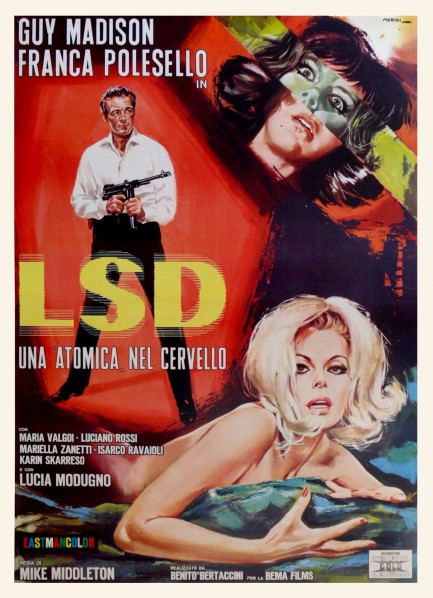
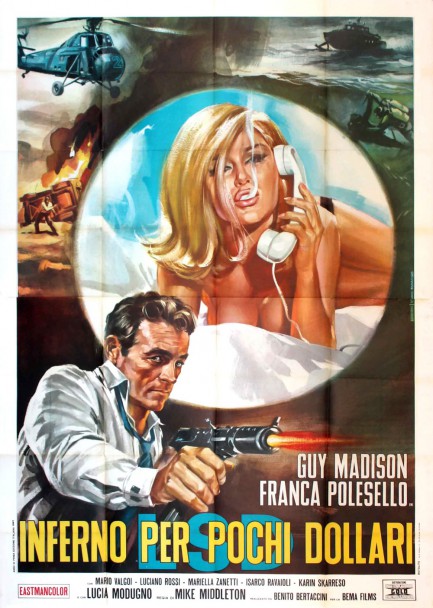
It’s amazing how awful and ineffectual 1960s anti-drug movies were. Massimo Mida’s spy caper LSD—Una atomica nel cervello, aka LSD—Inferno per pochi dollari, aka LSD—Flesh of the Devil, falls into that category. It isn’t quite Reefer Madness silly, but it comes close, with an unintentionally hilarious opener featuring a child blowing up two men with a toy car, then using a blowgun to take down a third who runs so slowly he might as well have canoes for feet. That bit is followed later in the film by giggly, spastic, tearful acid trip sequences put together by someone who maybe listened to Surrealistic Pillow but never actually tried drugs. Mida created the moniker Mike Middleton for his directorial credit, and we have to wonder if he was afraid having his real name attached to the film would shame his family. What saves the movie is that it’s got a touch of that ineffable Italian style, numerous location set-ups along the Lake Como shoreline, and plenty of the beautiful Franca Polesello, who you see below. There are worse ways to spend ninety minutes, but this feature is mainly for Italophiles and those with Mystery Science Theater 3000 wit. Others may want to steer clear. At least the poster art, by Moroni (first), and Diovano (second) is great. LSD—Una atomica nel cervello premiered in Italy today in 1967.
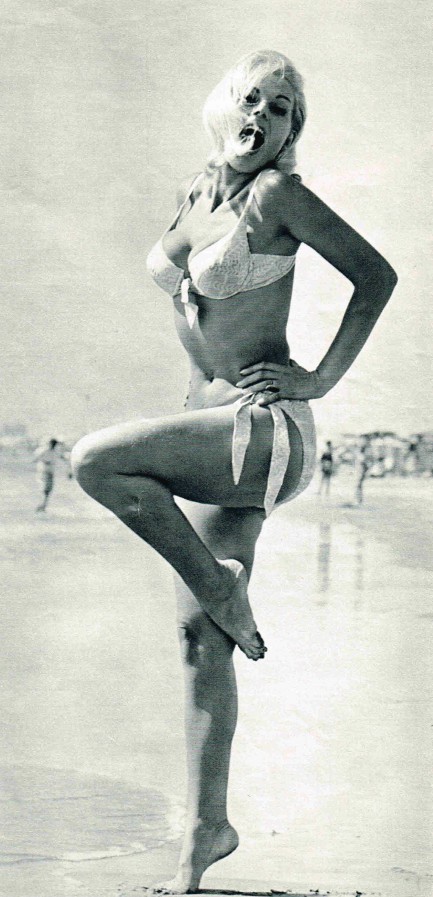
| Hollywoodland | Aug 6 2011 |

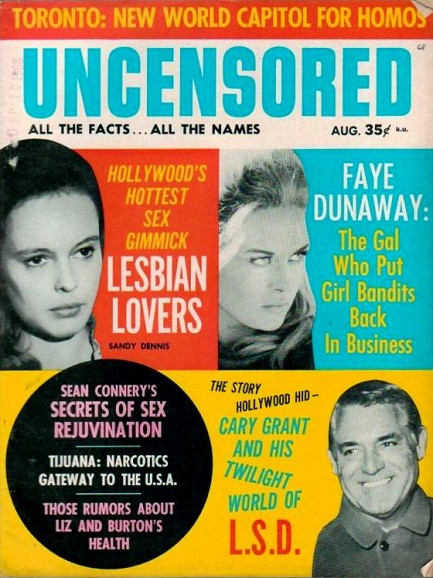
We’re back to the gossip magazine Uncensored today, with its info-packed cover telling us about gay Toronto, lesbian Hollywood, Sean Connery’s sex secrets and rumors about Liz Taylor and Richard Burton. But the standout item here (aside from the appearance of the non-word “rejuvination” and the misused term “capitol”) is the one on Cary Grant and his experimentation with LSD. Before the Beatles, Timothy Leary, and Carlos Castaneda, LSD was the drug of choice for a rarefied circle of glamorous elites who ingested it as part of their psychiatric therapy sessions. We’re talking about people as famous and diverse as aquatic actress Esther Williams, Time publisher Henry Luce, director Sidney Lumet, authors Aldous Huxley and Anais Nin, and composer André 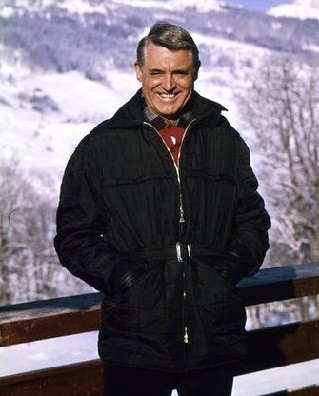 Previn.
Previn.
Cary Grant never tried to keep his LSD use secret. In fact, he spoke glowingly about it in a 1959 interview with Look magazine, saying that it had brought him close to happiness for the first time in his life. He also said that LSD taught him immense compassion for other people, and had helped him conquer his own shyness and insecurity.
But by 1968 the U.S. government—which had experimented extensively with LSD in hopes of using it as a truth serum or a form of chemical warfare, and had dosed thousands of people both willingly and unwillingly—was moving toward declaring the drug illegal. Grant’s wife Dyan Cannon had famously cited LSD usage as a primary factor in seeking a 1967 divorce, and the counterculture embrace of the drug was beginning to frighten middle America and the White House. That’s the backdrop against which this August 1968 Uncensored appeared, and by October of the year LSD was illegal. But the fact that public opinion had shifted—or more accurately, had been pushed by a steady, government-initiated anti-LSD campaign—did not particularly harm Grant’s public standing.
When he died in 1986 he was still one of the most revered Hollywood actors ever. And about his LSD usage he had no regrets. Quite the opposite—he commented: “Yes, it takes a long time for happiness to break through either to the individual or nations. It will take just as long as people themselves continue to confound it. You’ll find that nowadays they put you away for singing and dancing in the street. ‘Here now, let’s have none of that happiness, my boy. You cut that out; waking up the neighbors!’ Those darn neighbors need waking up, I can tell you, constable!”




































































